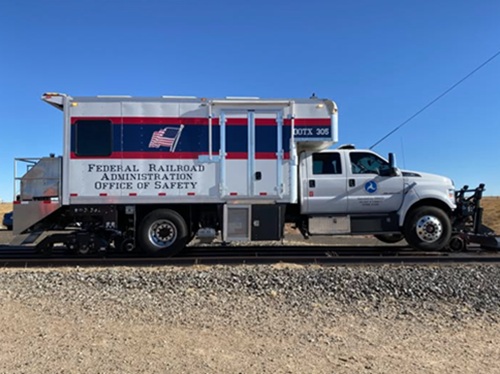The expansion of e-commerce activity is changing delivery methods and freight patterns, which is adding “complexity” to the design of transportation networks, according to Leslie Richards, secretary of the Pennsylvania Department of Transportation.
“Freight transportation is a major public policy issue and one that is becoming more visible to the general public,” she noted in her prepared remarks for the Eastern Pennsylvania Freight Summit, held June 21-22 at Lehigh University in Bethlehem, Pennsylvania.
“Goods movement is becoming more complex – e-commerce consumers are increasingly demanding goods and services that require shorter supply chains and global reach,” she added. “Just-in-time manufacturing and delivery practices have turned motor carrier fleets into rolling warehouses, with drivers who are faced with a limited supply of truck parking for required safety breaks.”
 PennDOT sponsored the summit along with several of its regional planning partners, including the Lehigh Valley Planning Commission, the Delaware Valley Regional Planning Commission and the Tri-County Regional Planning Commission.
PennDOT sponsored the summit along with several of its regional planning partners, including the Lehigh Valley Planning Commission, the Delaware Valley Regional Planning Commission and the Tri-County Regional Planning Commission.
Richards (seen at right) noted that “changes in the retail industry” in particular – especially due to e-commerce – will have “significant overall effects” on U.S. businesses, society, and the nation’s transportation system.
“Consumers are benefitting, but our aging freight infrastructure is struggling to keep up,” she stressed.
Added to that are shifts in freight patterns being driven by e-commerce – shifts that include more localized delivery and more reliance on small fleets that use smaller vehicles.
For example, Amazon announced on June 28 a new effort to help “entrepreneurs” build set up and manage delivery businesses operating fleets of up to 40 delivery vehicles delivering its online-ordered goods, providing “technology and operational support” of up to $10,000 per candidate to help acquire vehicles, branded uniforms, fuel, and comprehensive insurance coverage.
“Customer demand is higher than ever and we have a need to build more capacity,” noted Dave Clark, Amazon’s senior vice president of worldwide operations, in a statement. “As we evaluated how to support our growth, we went back to our roots to share the opportunity with small-and-medium-sized businesses. We are going to empower new, small businesses to form in order to take advantage of the growing opportunity in e-commerce package delivery.”
[Side note: at the unveiling to the 2018 State of Logistics report in Washington D.C. on June 19, author Sean Monahan, who is also a partner with global consulting firm A.T. Kearney, explained how such efforts will alter transportation networks especially in urban areas.]
And the pressure on transportation networks from e-commerce activity is only going to grow, according to two research companies that monitor that sector.
“E-retailing and logistics companies are increasingly focusing on expanding their presence in the North American markets, to extend their reach to remote customers,” noted consulting firm Research & Markets in an April 26 report, which predicts that the market for “last-mile” logistics services in the U.S. will experience a compound annual growth rate of 12.76 percent between 2018 and 2022 as a result.
“North America is witnessing the extensive growth of online retailing or e-retailing, due to the growing volume of consumers preferring online stores. Consumers are increasingly ordering large volumes of goods online and shifting from brick and mortar stores for their purchases,” the firm said.
“The demand for last mile delivery of large merchandise has witnessed strong growth during the past few years, driven by the growing consumer confidence in buying large and valuable goods from online shops,” added logistics research company Technavio in a May 7 report. “The scale of delivery network and the delivery efficiency plays a major role in vendor selection for delivery, due to which the service providers are focusing on expanding their geographical presence.”
 Top Stories
Top Stories
State DOTs Making Preparations for Wintertime Operations
December 12, 2025 Top Stories
Top Stories
